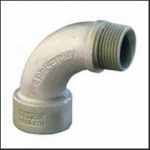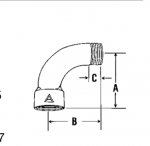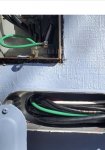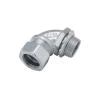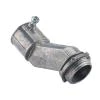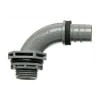I think it's a stretch to describe these as buried in the wall, and I don't think that matters. The photo in post #9 is the common use of these that I've seen in the field. Note that both ends of the fitting are directly accessible to a pull point. In that installation, for the purposes of pulling wire through them it doesn't matter whether it's in a wall or not. Correspondingly, I can tell you from experience (not my mistake, but I had to deal with fixing it) that it is indeed a terrible idea - whether or not it's technically prohibited - to put these anywhere a fishtape will be needed. But again, that makes no difference whether it's in a wall or exposed.
For what it's worth, one distributor referred to them as 'telephone 90s'. Which made me wonder if they're listed to use for power and lighting circuits. The 'explosion proof' part makes me think perhaps they are totally legit.
My guys would ask for these and I was kind of like "not sure these are legit, but okay, use them for this one purpose only" (i.e. where there's a box or conduit body more or less directly on both sides, with no more than one close nipple to mate on the female side). The more I thought about it, the more I came to think they are really not so different from offset nipples.
